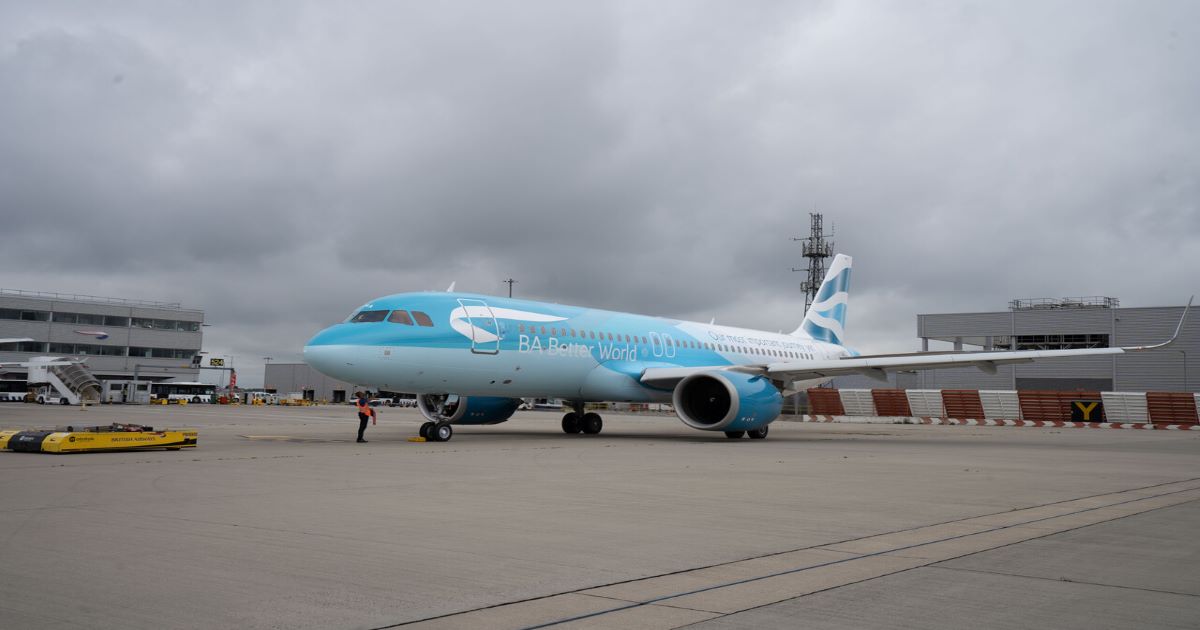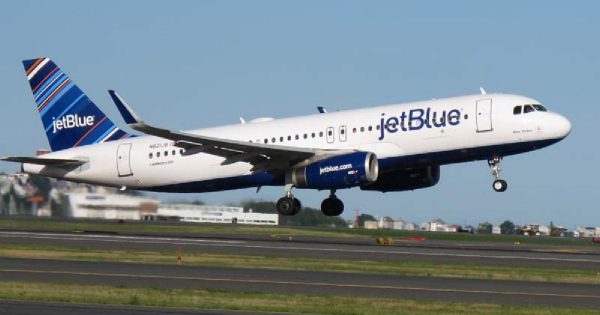British Airways has operated its first ever carbon neutral passenger flight. On September 14, BA1476 flew from London Heathrow to Glasgow Airport with an Airbus A320neo powered by sustainable aviation fuel (SAF) in this case recycled cooking oil from BP.
The one hour flight used was powered by a blend of 35% sustainable aviation fuel and 65% traditional jet fuel in accordance with technical aviation specifications.
The flight replicated one that British Airways operated to Edinburgh in 2010. At the time, neither offsetting nor sustainable aviation fuel were available to reduce the flight’s impact on the environment, and the journey was operated on an older aircraft carrying fewer passengers.
The aim of this week’s flight was to show how far the aviation industry has progressed in its efforts to decarbonise over the last decade.
The Airbus A320neos burn 20% less fuel, which means 20% less CO2, and are 50% quieter compared to its predecessor.
Other improvements that reduce the weight of the aircraft and so contribute to lower fuel use and lower emissions include newer, lighter seats, lighter catering trollies and digital downloads of flight manuals and inflight magazines.
The aircraft was pushed back using one of the airline’s electric Mototok vehicles, powered by Heathrow’s supply of 100% renewable electricity. Just one of the aircraft’s engines was used to taxi to the runway, almost halving the power used to start its journey.
Air traffic controllers at NATS directed the aircraft on its continuous climb from Heathrow and descent into Glasgow, avoiding any levelling off, which causes an increase in fuel burn. The most direct routing was provided by NATS as well as the most optimal flight level and the aircraft was able to land without airborne holding; techniques that successfully saved fuel and reduced emissions.
Climb speeds were programmed in advance and aircraft computer systems worked out the optimum altitude and used accurate weight and wind data to ensure the most efficient journey possible.
On landing, the second engine was switched off to halve the power used and carbon emitted as it taxiied to stand.
This year’s flight achieved a 62% CO2 emissions reduction compared with the flight in 2010 – 34% from more efficient aircraft and operations, 28% from the use of sustainable aviation fuel.
The remaining 38% offset comes from carbon offsets.
British Airways is on course to achieve its target of net zero emissions by 2050 through a series of short, medium and long-term initiatives. These include investment in new aircraft, the development of sustainable aviation fuel and hydrogen-powered aircraft and the investigation of carbon capture technology.
The airline also announced a collaboration with BP last week to source sustainable aviation fuel in respect of all flights between London, Glasgow and Edinburgh during the UK COP26 conference.
British Airways’ parent company International Airlines Group recently committed to operating 10% of its flights using SAF by 2030.
N.B. Image credit: British Airways





